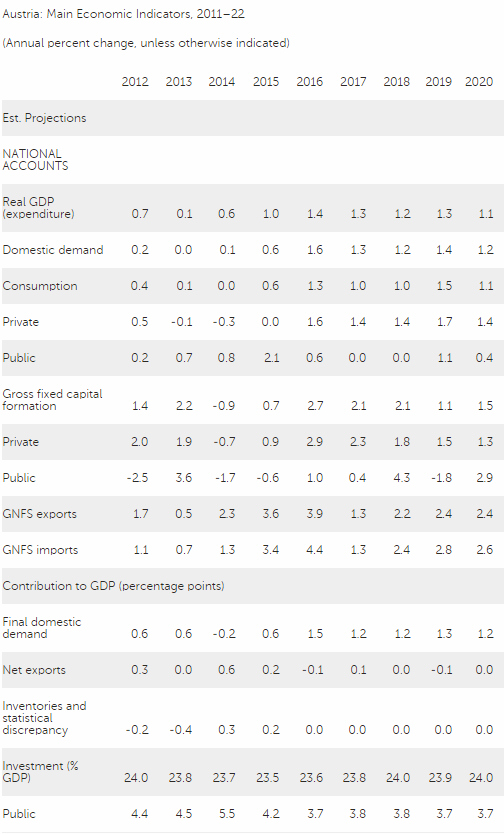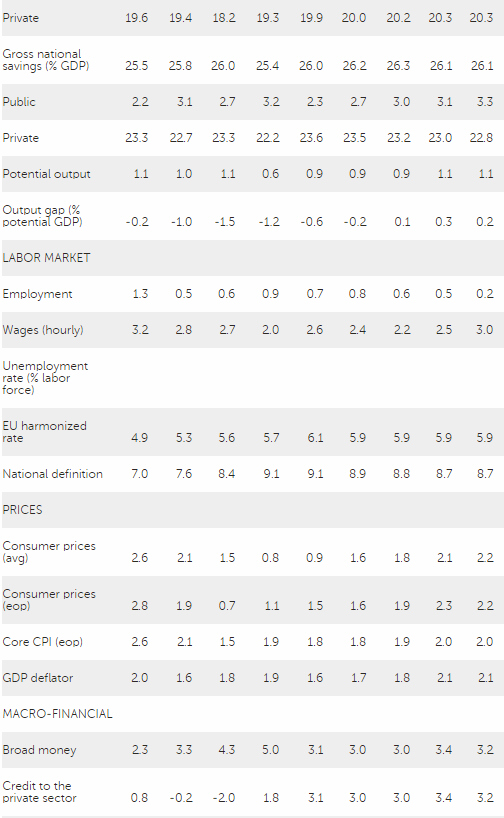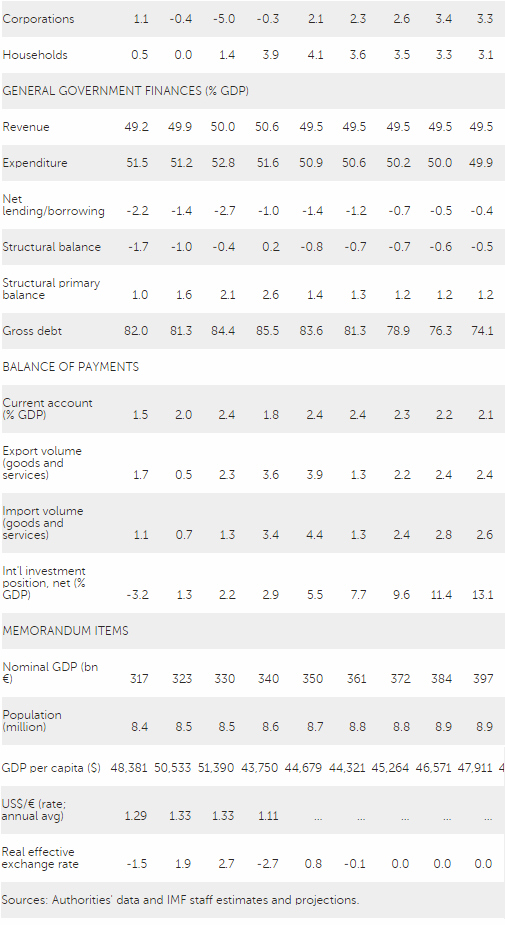IMF Executive Board Concludes 2016 Article IV Consultation with Austria
On February 1, the Executive Board of the IMF concluded the Article IV consultation with Austria, and considered and endorsed the staff appraisal without a meeting.
Austria is prosperous and stable. The economy has weathered the global financial crisis (GFC) relatively well, and output surpassed pre-crisis levels in 2011. While growth has been slow in recent years, inequality and poverty are low, and living standards high.
The economic recovery has strengthened in 2016. GDP growth in 2016 is estimated at 1.4 percent, an improvement over the average growth of 0.6 percent in 2012–15. Growth has been broad-based, driven by private consumption supported by income tax cuts, a recovery in investment, and higher public consumption due to spending on refugees. Employment growth has picked up as well, and unemployment has stabilized at below 6 percent. At 1.5 percent y/y in November 2016, inflation is gradually picking up from low levels, driven mainly by rising energy prices and price hikes in tourism-related services. The outlook for 2017 appears similarly robust, while in the medium term growth would decline toward its potential rate, which IMF staff estimate at just above 1 percent. Risks to the outlook are mainly external, with limited likely impact overall.
Executive Board Assessment
In concluding the 2016 Article IV consultation with Austria, Executive Directors endorsed the staff’s appraisal as follows:
Austria benefits from high levels of stability and social cohesion. Per capita income is high, unemployment comparatively low (even though higher than previously), social protection systems are strong, and the society is among the most equitable of advanced economies.
The overall outlook is solid, but potential growth is low. Growth picked up in 2016, but is projected to slow gradually toward the medium-term potential rate of just above 1 percent as the output gap closes and fiscal policy turns back to consolidation. Unemployment is set to remain elevated for some time as employment creation just keeps pace with the rising labor force, while inflation is projected to gradually rise to slightly above 2 percent in the medium term.
Risks arise from a number of external factors, but are overall limited. International political fragmentation or slow growth in other advanced economies and/or emerging markets would undermine Austria’s performance, largely through the trade and financial channels. However, with the European Single Market providing a stable economic framework and bank exposure to risks in CESEE declining, the overall vulnerability of the Austrian economy is limited.
Raising the economy’s potential is important to raise living standards further and lower unemployment, as well as to ease the fiscal burden of demographic change. A comprehensive reform package should focus on four key areas: (i) structural reforms to strengthen competition and further reduce firms’ administrative burden; (ii) raising public investment to support private sector productivity and investment; (iii) shifting the tax mix away from labor toward property, pollution, and consumption; and (iv) providing incentives for higher labor force participation among elderly workers, as well as for full-time employment of women.
Long-term fiscal sustainability requires additional reforms. While projections indicate a reduction of the fiscal deficit and debt in the medium term—largely on account of interest savings and restraint in government consumption—fiscal pressures will re-emerge over the longer term as the population ages, and debt will start to rise again. To ensure fiscal sustainability in such an environment, the current window of opportunity should be used to put in place efficiency-boosting expenditure reforms in health, education, and subsidies, as well as further pension reform measures. To be successful, many of these reforms require adjustments in fiscal relations between the federal and subnational governments. The potential for savings is significant, and, in combination with growth-raising reforms, sufficient to ensure long-term fiscal sustainability. Full implementation of these reforms would also allow reducing the labor tax wedge further.
Maintaining financial stability calls for ensuring that banks raise capital as planned and availing regulators with macroprudential tools to address potential risks in the real estate market. Boosting banks’ capital buffers remains important, even though the low-growth, low-interest rate environment makes this challenging. The authorities’ introduction of a systemic risk capital buffer is welcome—they now need to ensure that banks will meet their capital targets as scheduled. This is all the more important as the environment for banking remains difficult both at home and abroad, and new challenges may arise. Financial stability risks from the real estate markets are currently limited; nonetheless, regulators should be given the legal authority to use macroprudential instruments at their discretion. To preserve Austria’s position as a financial center, the authorities will also need to bolster its AML/CFT framework, notably by enhancing supervision and banks’ compliance.



Source: International Monetary Fund
- 285 reads
Human Rights
Ringing FOWPAL’s Peace Bell for the World:Nobel Peace Prize Laureates’ Visions and Actions

Protecting the World’s Cultural Diversity for a Sustainable Future

The Peace Bell Resonates at the 27th Eurasian Economic Summit

Declaration of World Day of the Power of Hope Endorsed by People in 158 Nations

Puppet Show I International Friendship Day 2020

